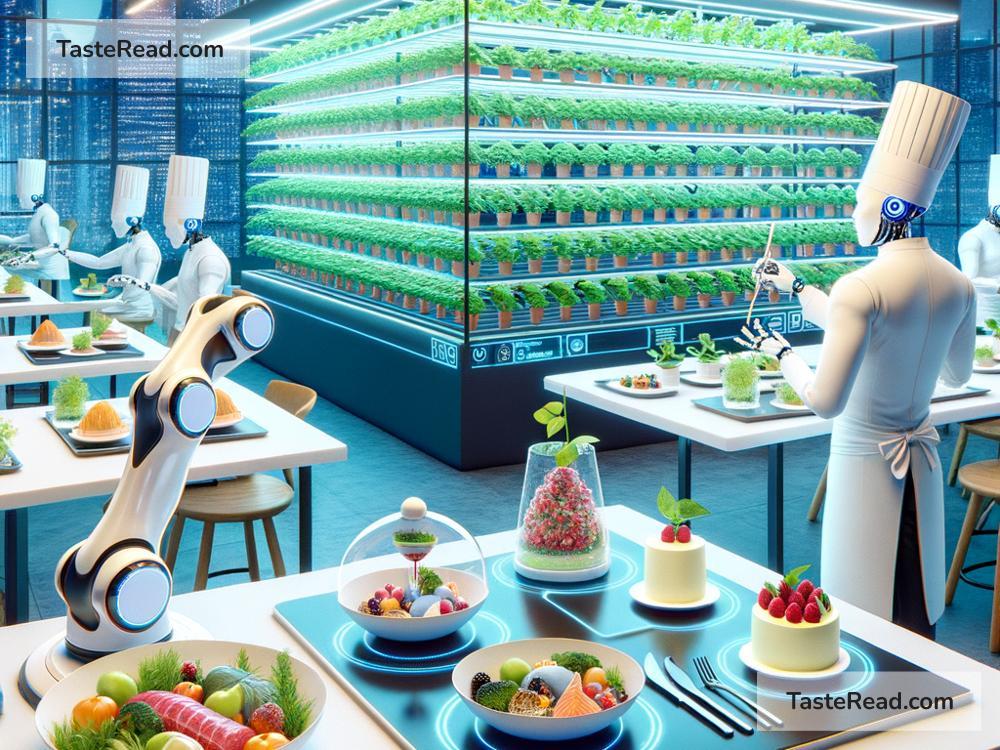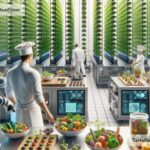The Future of Food: Transformative Innovations Shaping Our Meals
Food is one of the most important parts of our daily lives. It influences not only our health but also our planet’s well-being. As we look into the future, we are seeing exciting changes in the way food is grown, produced, and consumed. Innovators around the world are coming up with revolutionary ideas to solve challenges like hunger, climate change, and limited natural resources. Let’s dive into how global innovations are transforming food and shaping a sustainable future.
The Need for Innovation in Food
Our global food system faces many challenges. The world’s population is growing fast, and experts estimate there will be over 9 billion people by 2050. To feed everyone, farmers will have to grow 70% more food while dealing with limited land, water, and unpredictable weather due to climate change. On top of that, traditional agricultural practices contribute to environmental problems like deforestation and greenhouse gas emissions.
Another big issue is food waste. Around one-third of all food produced globally is wasted every year. This is enough to feed billions of people, yet hunger still exists in many places. Clearly, we need smarter ways to grow, distribute, and consume food. Luckily, new technologies and ideas are stepping in to help us overcome these challenges.
Revolutionary Trends in the Future of Food
1. Alternative Proteins
More people are turning to plant-based and lab-grown meats as alternatives to traditional animal farming. Why? Raising animals for food uses a lot of resources and creates harmful pollution. Scientists have developed “cultured meat,” which is grown directly from animal cells in labs, without the need to raise or slaughter livestock. This method reduces environmental impact and could make meat production more efficient in the future.
On the other hand, plant-based proteins like veggie burgers and dairy-free milks are gaining popularity. Companies like Beyond Meat and Impossible Foods create alternatives that taste similar to real meat, giving consumers an eco-friendly choice without sacrificing flavor. Insects, like crickets, are also being explored as a sustainable protein source because they require less space, water, and food to grow.
2. Vertical Farming
Imagine growing food inside tall buildings instead of sprawling open fields. Vertical farming uses stacked layers of crops in controlled indoor environments to grow fresh food all year long. These farms use LED lights, minimal water, and no soil—perfect for urban areas with limited land.
This innovative farming method is already being adopted in cities like Singapore and Dubai, where fresh produce isn’t easy to grow locally. Vertical farming is not only efficient but also environmentally friendly, as it avoids harmful pesticides and can be powered by renewable energy.
3. Smart Agriculture
Technology is helping farmers work smarter, not harder. Drones, robots, and sensors are being used for “precision farming,” which involves carefully monitoring crops and animals to improve efficiency. Sensors can measure soil health, weather patterns, and even plant growth, letting farmers know exactly when to water, fertilize, or harvest.
Artificial intelligence (AI) is taking innovation even further. By analyzing large amounts of data, AI tools can predict crop diseases, optimize planting schedules, and recommend the best sustainable farming practices. These tech-driven solutions allow farmers to produce more food with less waste and minimal impact on the environment.
4. Climate-Resilient Crops
As the planet gets warmer and weather becomes unpredictable, scientists are developing “climate-resilient” crops that can survive extreme conditions. These crops are engineered to grow faster, use less water, and resist diseases. Innovations like genetically modified organisms (GMOs) are helping farmers produce food that thrives in areas affected by climate change.
For example, drought-resistant corn can grow in dry regions, while salt-tolerant rice can grow in areas with salty soil. These transformative advancements ensure that food can still be grown in challenging environments.
5. Personalized Nutrition
Have you ever wondered why one diet doesn’t fit everyone? People have different needs based on their genes, lifestyle, and health conditions. The future of nutrition involves personalized diets that cater to each individual. Using data from wearable devices, DNA tests, and smart apps, companies can recommend specific foods and supplements tailored for optimal health.
This approach can help prevent chronic diseases and improve how people feel day-to-day by making their diet as unique as they are.
Making Food Sustainable for the Planet
One of the biggest trends in food innovation is sustainability. Consumers are demanding food that is healthier for the environment, and companies are listening. For example, packaging made from edible or biodegradable materials is replacing traditional plastic. Efforts to combat food waste are also growing, with apps and platforms helping businesses and consumers share surplus food instead of throwing it away.
Additionally, producing energy-rich foods from less resource-heavy sources (like algae or fungi) is becoming a reality. These innovations ensure we make the most of what we produce while protecting the Earth.
The Road Ahead
The future of food is full of possibilities. With the help of technology and science, we can solve many challenges—creating food systems that are sustainable, nutritious, and equitable for everyone. However, there’s still work to be done. Governments, businesses, and individuals need to collaborate and invest in research and education to spread new innovations across the globe.
It’s clear that the way we eat is evolving. From lab-grown meat to AI-powered farming, these transformative ideas are ensuring that future generations can enjoy delicious and healthy meals while taking care of our planet. Every time we make smarter food choices or support sustainable practices, we are becoming part of this exciting journey. The future of food is not just about survival—it’s about thriving, together.


